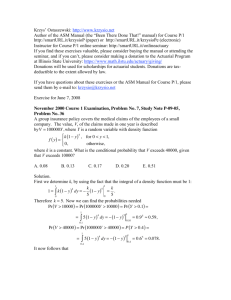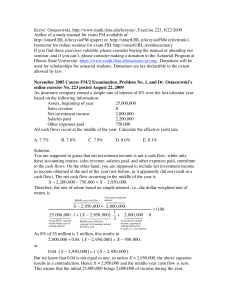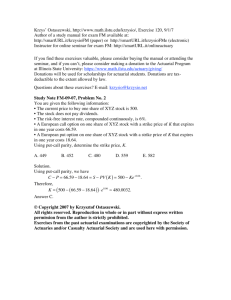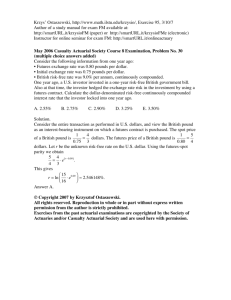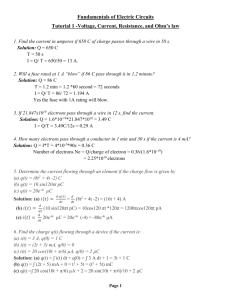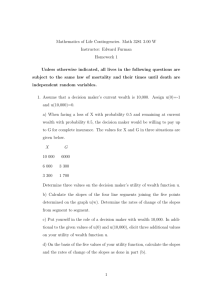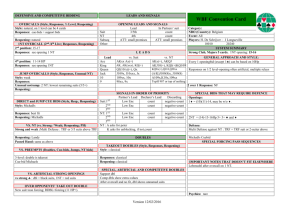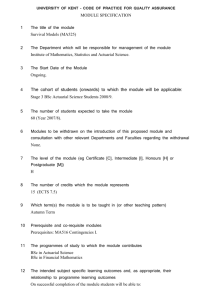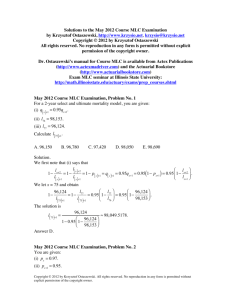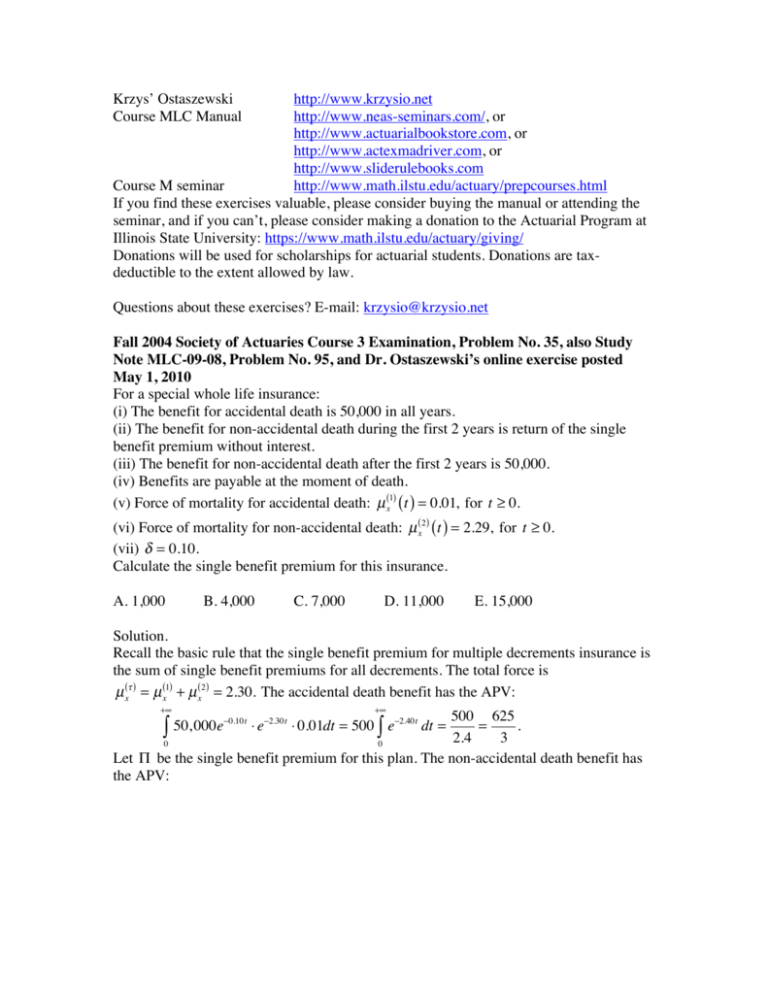
Krzys’ Ostaszewski
Course MLC Manual
http://www.krzysio.net
http://www.neas-seminars.com/, or
http://www.actuarialbookstore.com, or
http://www.actexmadriver.com, or
http://www.sliderulebooks.com
Course M seminar
http://www.math.ilstu.edu/actuary/prepcourses.html
If you find these exercises valuable, please consider buying the manual or attending the
seminar, and if you can’t, please consider making a donation to the Actuarial Program at
Illinois State University: https://www.math.ilstu.edu/actuary/giving/
Donations will be used for scholarships for actuarial students. Donations are taxdeductible to the extent allowed by law.
Questions about these exercises? E-mail: krzysio@krzysio.net
Fall 2004 Society of Actuaries Course 3 Examination, Problem No. 35, also Study
Note MLC-09-08, Problem No. 95, and Dr. Ostaszewski’s online exercise posted
May 1, 2010
For a special whole life insurance:
(i) The benefit for accidental death is 50,000 in all years.
(ii) The benefit for non-accidental death during the first 2 years is return of the single
benefit premium without interest.
(iii) The benefit for non-accidental death after the first 2 years is 50,000.
(iv) Benefits are payable at the moment of death.
(v) Force of mortality for accidental death: µ x(1) ( t ) = 0.01, for t ≥ 0.
(vi) Force of mortality for non-accidental death: µ x( 2 ) ( t ) = 2.29, for t ≥ 0.
(vii) δ = 0.10.
Calculate the single benefit premium for this insurance.
A. 1,000
B. 4,000
C. 7,000
D. 11,000
E. 15,000
Solution.
Recall the basic rule that the single benefit premium for multiple decrements insurance is
the sum of single benefit premiums for all decrements. The total force is
µ x(τ ) = µ x(1) + µ x( 2 ) = 2.30. The accidental death benefit has the APV:
+∞
+∞
500 625
=
.
2.4
3
0
0
Let Π be the single benefit premium for this plan. The non-accidental death benefit has
the APV:
−0.10t
−2.30t
−2.40t
∫ 50, 000e ⋅ e ⋅ 0.01dt = 500 ∫ e dt =
+∞
2
∫ Πe
−0.10t
⋅e
−2.30t
⋅ 2.29dt +
0
∫ 50, 000e
−0.10t
2
+∞
2
=
⋅ e−2.30t ⋅ 2.29dt =
∫ (Π − 50, 000 )e
−0.10t
⋅e
−2.30t
⋅ 2.29dt +
0
∫ 50, 000e
−0.10t
⋅ e−2.30t ⋅ 2.29dt =
0
+∞
= ( Π − 50, 000 ) ⋅ 2.29 ⋅ a2 δ = 240% + 50, 000 ⋅ 2.29 ∫ e−2.4t dt =
0
−4.8
1− e
50, 000 ⋅ 2.29
+
≈ 0.94631412Π + 392.627515.
2.40
2.4
Using the equivalence principle, we arrive at this linear equation:
625
Π=
+ 0.94631412Π
392.627515
+
,
3
Non-accidental death
= ( Π − 50, 000 ) ⋅ 2.29 ⋅
Accidental
death benefit
and the solution is Π ≈ 11,194.0199.
Answer D.
© Copyright 2006-2010 by Krzysztof Ostaszewski. All rights reserved.
Reproduction in whole or in part without express written permission from the
author is strictly prohibited.
Exercises from the past actuarial examinations are copyrighted by the Society of
Actuaries and/or Casualty Actuarial Society and are used here with permission.

